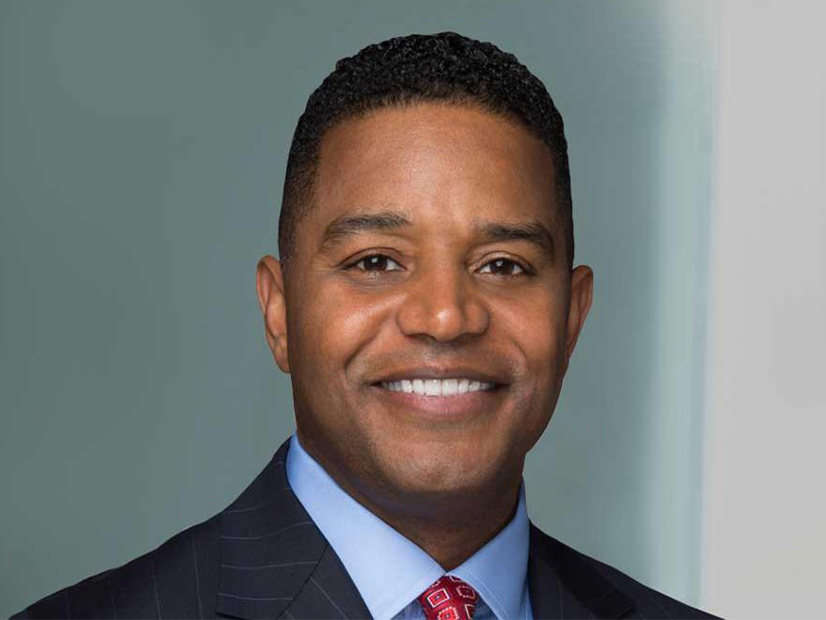Estimates of data center growth across Exelon’s service regions have increased by about 80% since the year began, executives said during the utility’s third-quarter earnings call. They predicted steady growth in transmission upgrades and a regulatory battle to define the grid service costs applicable to data centers that co-locate with generators.
Exelon CEO Calvin Butler said it now forecasts 11 GW of high-probability data center load, up from 6 GW at the start of 2024. While that presents an opportunity for growth, he stressed that getting that load interconnected must be done in a coordinated, thoughtful and efficient manner to yield “transparent, forward-looking planning and ratemaking.”
That goal underlies its advocacy at FERC, PJM and legislatures to ensure that co-located load configurations pay for any grid services they benefit from and are studied for any reliability implications. (See Exelon, Constellation at Loggerheads over Data Center Co-location.)
Data centers seek to co-locate with several nuclear generators in their search for carbon-free power, including Constellation’s Calvert Cliffs Nuclear Power Plant in Maryland, Limerick Nuclear Power Plant in Pennsylvania and Talen’s Susquehanna Nuclear Plant.
Exelon COO Michael Innocenzo said co-located configurations can have several impacts on the grid that would not be recognized under the proposals from Constellation and Talen. Those include ancillary services the load benefits from by nature of drawing off a generator that itself is interconnected, as well as grid upgrades that may be prompted by removing that capacity from PJM’s system.
“Our whole position has just been — if they can co-locate, if they can get in there quick and get in there doing what they want to do, we support that. We just want to make sure that it has the appropriate transparency on what they are doing. We want to make sure that we have the appropriate studies done to make sure that we are addressing resource and reliability and adequacy currently, and we also want appropriate rate design to be able to cover for those costs, either now or in the future,” Innocenzo added.
More generation also will be needed to meet that load growth, which Butler said will require changes to PJM’s capacity market structure to ensure increasing costs don’t compromise the goal of efficiently meeting demand. While Exelon is not advocating for an expansion of regulated generation, he said it’s engaging in discussions with other utilities and regulators on the subject.
“And I do appreciate PJM’s leadership to put forward interconnection and various capacity and market reforms. And it’s just another example that the PJM stakeholder process is just not working. And we will continue to support them as well as other federal and regional agencies to get that done,” Butler said.
Quarterly Earnings on Pace with Projections
Earnings continued to be on track to meet the utility’s guidance of $2.40 to $2.50 earnings per share, with quarterly earnings 4 cents higher compared to the same period last year because of the timing of ComEd’s distribution earnings. Higher distribution and transmission rates increased earnings another 3 cents, which were equally offset by higher interest rates.
Final orders on rate bases for ComEd and PECO are expected from the Illinois Commerce Commission and Pennsylvania Public Utilities Commission within the next few months, which would cover about half of Exelon’s total base. Butler said the utility plans to make $34.5 billion in capital investments between 2024 and 2027, increasing its rate base by about 7.5%.
The use of multiyear plans in several states offers additional transparency and affordability for consumers and allows Exelon to build on its long-term plans more effectively, Butler said.
Exelon CFO Jeanne Jones said the utility’s transmission projects already are leading to cost savings for consumers, with upgrades to bring the Vienna-Nelson from 138 kV to 230 kV running two years ahead of schedule. Once that’s complete, Indian River Unit 4 will be able to finish its deactivation, potentially leading to an early end to a reliability-must-run contract with NRG Energy to keep the generator operational. If that agreement were to terminate two years early, Jones said it would save ratepayers nearly $100 million, more than 1.5 times the cost of the transmission upgrades. (See PJM OC Briefs: July 11, 2024.)



